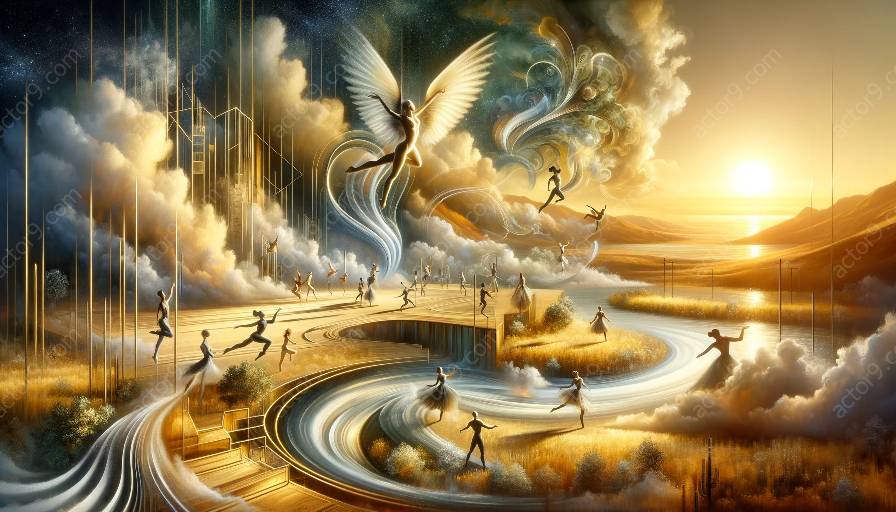Understanding the intersection of physical theatre and circus arts is essential for educators aiming to capture the essence of this unique art form. In this cluster, we will delve into the educational approaches and explore the compatibility of physical theatre and circus arts, providing a comprehensive understanding for teaching this creative fusion.
Introduction to Physical Theatre and Circus Arts
Physical theatre is a form of performance that emphasizes the use of physical movement, gestures, and expressions to convey ideas and emotions. It often incorporates elements of dance, mime, and acrobatics to create powerful and engaging storytelling. On the other hand, circus arts encompass a wide range of performance disciplines such as acrobatics, clowning, juggling, and aerial acts, showcasing skill and precision within a theatrical context.
The intersection of physical theatre and circus arts brings together the expressive storytelling of physical theatre with the awe-inspiring physical feats of circus performance, offering a captivating and multidimensional experience for both performers and audiences.
Teaching the Intersection
When it comes to educating students about the intersection of physical theatre and circus arts, several approaches can be employed to provide a comprehensive understanding of this unique form of expression. By incorporating a blend of theoretical knowledge, practical exercises, and historical context, educators can offer a well-rounded learning experience.
1. Theoretical Foundations
Providing students with a deep understanding of the theoretical underpinnings of physical theatre and circus arts is essential. This includes exploring concepts such as movement, space, rhythm, and character development within the context of both art forms. By delving into the theories behind physical theatre and circus arts, students can gain insight into the artistic principles that drive these performances.
2. Practical Application
Engaging students in practical exercises that incorporate elements of both physical theatre and circus arts can deepen their understanding of the intersection. This could involve workshops focusing on physical expression, acrobatic techniques, and collaborative storytelling, allowing students to embody the fusion of these art forms and develop their own creative interpretations.
3. Historical and Cultural Context
Exploring the historical and cultural significance of physical theatre and circus arts provides students with a broader perspective on the evolution of these art forms. Educators can weave in discussions about influential practitioners, landmark performances, and the societal impacts of physical theatre and circus arts, enriching the educational experience with a contextual backdrop.
The Compatibility of Physical Theatre in Circus Arts
Understanding the compatibility of physical theatre in circus arts is crucial for educators seeking to emphasize the expressive and narrative aspects within the realm of circus performance. By delving into the fundamental elements of physical theatre and analyzing how they intertwine with the various disciplines of circus arts, educators can shed light on the cohesive potential of these art forms.
1. Embracing Narrative and Expression
Physical theatre brings a unique dimension to circus arts by infusing narrative and emotional expression into performances. Educators can highlight the power of storytelling through physicality and guide students in incorporating theatrical elements into their circus acts, fostering a deeper connection with audiences.
2. Integrating Movement and Characterization
The focus on movement and characterization in physical theatre can enhance the dynamic aspects of circus arts. Educators can explore how the nuances of body language, gestures, and physical presence can elevate circus acts, adding depth and complexity to the artistic portrayal of characters and themes.
3. Collaborative Exploration
Encouraging collaborative exploration between physical theatre and circus arts allows students to experiment with innovative approaches to performance. Educators can facilitate interdisciplinary projects where students merge the techniques of physical theatre with the skills of circus arts, fostering an environment of inventive cross-pollination.
Conclusion
The intersection of physical theatre and circus arts offers a rich tapestry of artistic possibilities and educational opportunities. By embracing the compatibility and understanding the various approaches to teaching this fusion, educators can inspire students to explore the boundaries of expression and creativity within the vibrant world of physical performance.




































